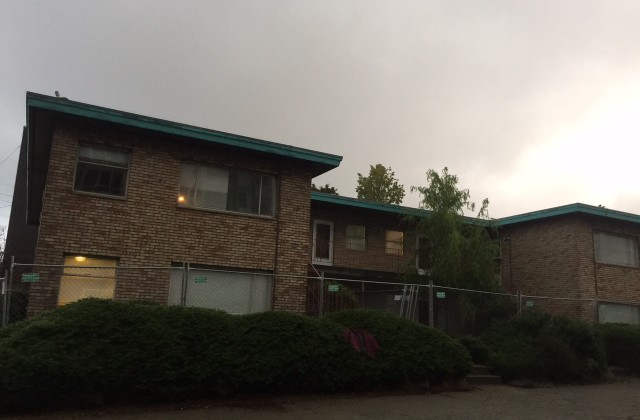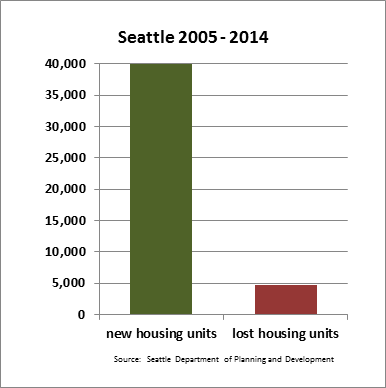Demolishing the Displacement Narrative
So it’s about as wonky as it can get. A dispute over how many housing units have been demolished in Seattle and what it means has lead to some very interesting back and forth on the internet this last week. Here’s the best summary of what went down from Ethan Phelps-Goodman. There isn’t an explosion of demolitions.
The erroneous analysis started in Schema Design’s ARCADE magazine, which ran a story and accompanying graphics showing the number of demolition permits per year growing from a mere 14 in 2005 to an expected 875 in 2015. Knute Berger followed up with a column in Seattle Magazine that cited the ARCADE piece and a supposed 8-fold increase in demolitions. In reality, demolitions are down from their previous peak in 2007 and 2008 and roughly in line with long-term trends.
Schema’s mistake? They draw their 10 year analysis from a dataset titled “Building Permits issued in the past five years”. When they plot this data, it’s no surprise that 2010-2015 looks dramatically different from 2005-2009, a period that isn’t included in their source data. The data does contain a few holdovers from previous years, making the resulting graph look plausible if you’re already inclined to believe the article’s conclusions.
So what? Well, the problem with the data is obvious. Schema just picked a piece of data then said demolitions are “skyrocketing.” That’s the obvious data goof. But Berger’s piece was a typical paean about how “things ain’t what they used to be around here.” That’s the narrative the data was use to support, “runaway” growth is ruining this town!
We’ve covered this ground before. It’s a stubborn canard. So stubborn in fact that John Fox has built an entire organization around the idea that hundreds of affordable housing units are being demolished all over town to make way for luxurious apartments for nouveau riche techies with lots of money to spend. This simply isn’t true. In fact here’s a chart that by internet standards is ancient — from all the way back in 2014.
I think we did a version of this that changed the term “lost” to something else. Lost is a bit dramatic. I wrote about this in a post called, “Out With (a few) of the Old, In With (a lot) of the New.” So it’s funny that this dispute flared up again. It’s as if, well, people think that greedy developers are squashing out the soul of Seattle with all the new building. Poor people are being “priced out” of their affordable units, and those units are being renovated or demolished to make way for, you guessed it, those young, newly rich kids from Amazon.
Great story, but none of it is true. In fact, every time we’ve demolished a unit over the past decade or so, we’ve replaced it with 8 new units. And that one unit wiped out was not a subsidized unit. Why? Because subsidized units are generally covenanted for decades by legal agreements with Federal, State, and sometimes local governments that put up the money. Some number of those units demolished were from tired old housing stock that was not using land to full capacity. The featured image above is a good example. An old worn out 12 unit building on Thomas and Broadway is going to be “lost” to probably 80 units of new housing.
The story woven by writers like Berger is so ingrained that slapping some charts and graphs doesn’t usually illicit much interest. Berger could have gotten just as many nods and harumphs of satisfaction had he dispensed with the quantitative antics. Not necessary. We’re in a housing crisis after all! Caused by all those jobs and we’re seeing everything we know and love demolished to make way for ugly apartments for rich people.
Except that just isn’t happening.
What is happening is that we’re struggling to keep up with housing demand, which is pitting renter against renter in the market competing for scarce units instead of landlord competing against landlord for tenants. But that just sounds complicated and there’s no villain in that story unless you consider angry neighbors fighting new housing villains. The City Council just calls them “voters.”



